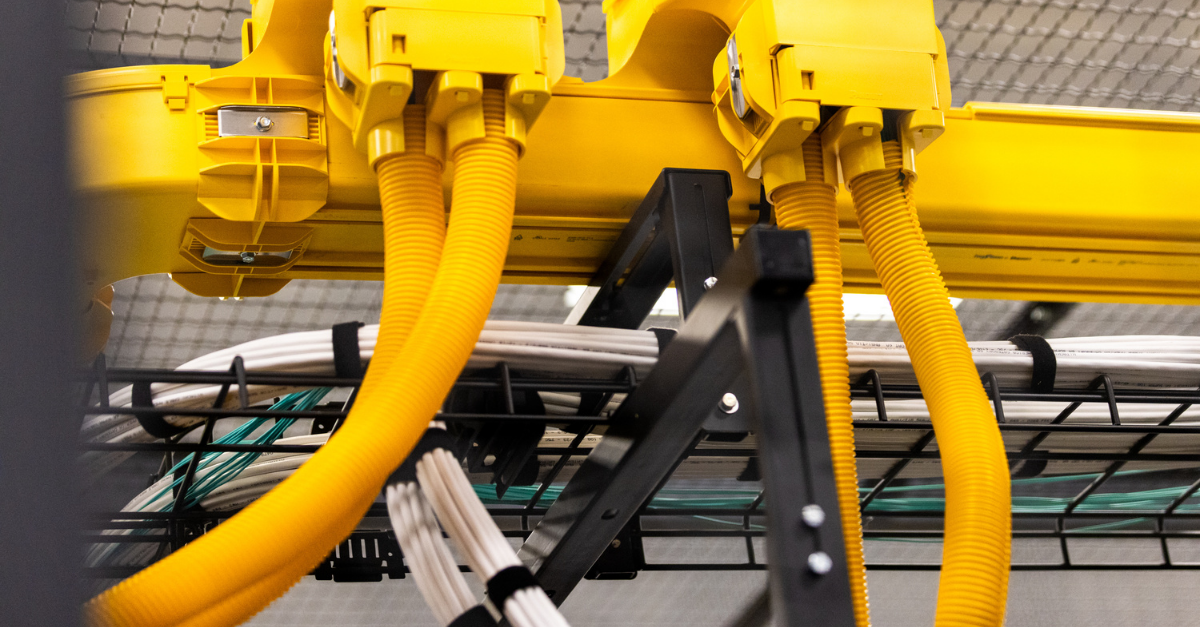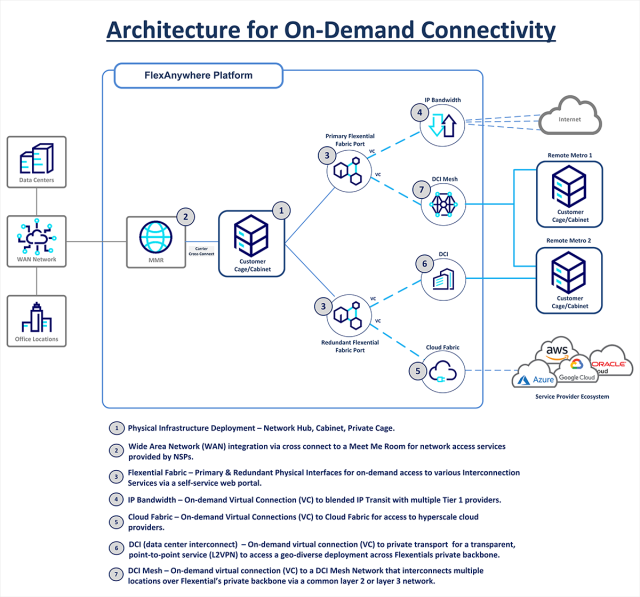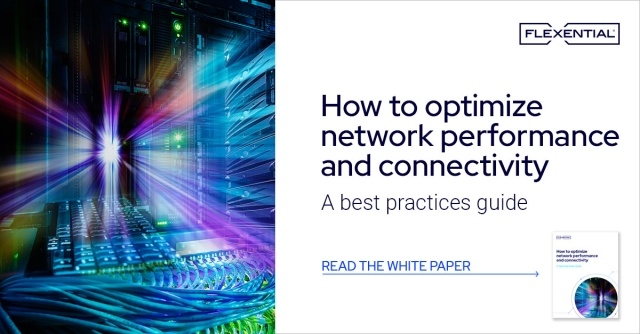Accelerating business growth: The Flexential Fabric interconnection ecosystem
Businesses need fast, scalable, and flexible ways to connect with their ecosystem. Learn how software-defined interconnection can satisfy a wide range of use cases, and interconnection needs for mission-critical destinations.

Enterprises are looking for dynamic and flexible ways to connect to customers, partners, and vendors that comprise their ecosystem. How businesses connect to participants in their ecosystem becomes a crucial conversation as this connectivity drives critical data flow, proprietary information, and ultimately actionable business outcomes. Many different attributes should be considered when thinking about proper connectivity, such as speed, flexibility, and scalability, just to name a few. We will explore how software-defined interconnection on the FlexAnywhere Platform can satisfy a wide range of use cases, and interconnection needs for mission-critical destinations.
Evolution beyond traditional interconnects
Traditionally, private interconnects between two agreeing parties were facilitated through a piece of copper or fiber, known as a cross connect. While this satisfied the need for connectivity at the time, it does come with limitations in the evolving digital world where business is continually conducted. This one-to-one relationship meant connecting parties must be in the same building or data center campus to connect. Additionally, these physical links utilize precious port capacity on your infrastructure with the inability to scale bandwidth up or down to meet traffic demand.
To help overcome the constraints with layer one, physical connections, software-defined interconnections provide the ability to reach customers located in different markets or regions and the flexibility to scale bandwidth. This layer two construct takes advantage of a dedicated network backbone and an ecosystem of connected providers to deliver on-demand connectivity. Software-defined connections provide the ability to have a single physical interface with multiple virtual connections (VCs), which act like cross connects, facilitating a private layer two link between two parties. Flexential Fabric facilitates software-defined connectivity with a wide array of use cases for both private transport and IP transit.
Distributed infrastructure for enhanced user experience
Virtual connectivity on Flexential Fabric enables businesses to distribute infrastructure in proximity to their users and ecosystems with increased flexibility, cost-effectiveness, and agility to scale. Rather than having data centralized, distributed workloads that are placed at the digital edge provide an enhanced user experience. With Flexential Fabric, distributed infrastructure can be stitched together, providing a fully connected network riding a private backbone. These edge locations can locally connect to cloud service providers and IP transit, unlocking a broad range of services with low latency connectivity. Virtual connections on this fabric offer scalable bandwidth options on a termed or month-to-month basis, optimizing both throughput and cost simultaneously. This simplifies the process of entering markets and modifying bandwidth to connect users to their workloads while reducing the dependency on physical connections.
Connectivity across use cases
Flexential Fabric is a catalyst for ecosystem connectivity across use cases. These use cases include hybrid multi-cloud connectivity, interconnecting data centers, and expansions into new markets. As enterprises find the optimal environments to run different types of workloads, our Cloud Fabric enables connectivity between their on-premises infrastructure and hyperscale cloud environments. Not only does this enable access to applications in a single cloud provider, but applications spanning multiple clouds for streamlined integration across your ecosystem destinations. Flexential Fabric also helps customers interconnect their data centers spanning different metros through transparent point point-to-point links or a meshed network. The ability to turn up circuits in a matter of minutes increases business agility and provides high availability across markets. Establishing infrastructure in new markets and integrating sites onto your network allows organizations to meet changing needs and demands with ease.
Enterprises can unlock key competitive advantages in a changing IT landscape through the coupling of distributed infrastructure and virtualized connectivity to the Flexential interconnection ecosystem. With access to localized data for low latency connectivity and scalable bandwidth, it provides users with faster results, increased response times, and reduced outages, driving satisfaction and enhanced experience. With increased dependency on clouds and digital workloads, it is imperative to have a modernized network for digital transformation efforts and acceleration. Utilizing Flexential Fabric to gain more efficient and cost-effective connectivity will provide companies with a digital advantage for improving productivity and agility.
A competitive advantage
The digital landscape is shifting in front of our eyes, and the opportunities to create digital advantages can be captured with the right workload in the right environment, with the proper connectivity linking the two. Flexential Fabric provides the competitive advantages of connecting your ecosystem with speed, reliability, and scalability. The possibilities with this innovative platform are endless and will accelerate digital transformation journeys.
Learn more about Flexential Fabric and why it's revolutionizing the way interconnection services are consumed!








